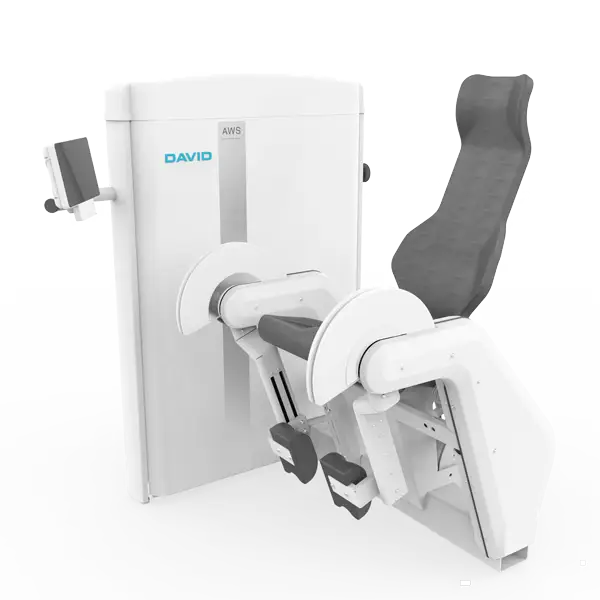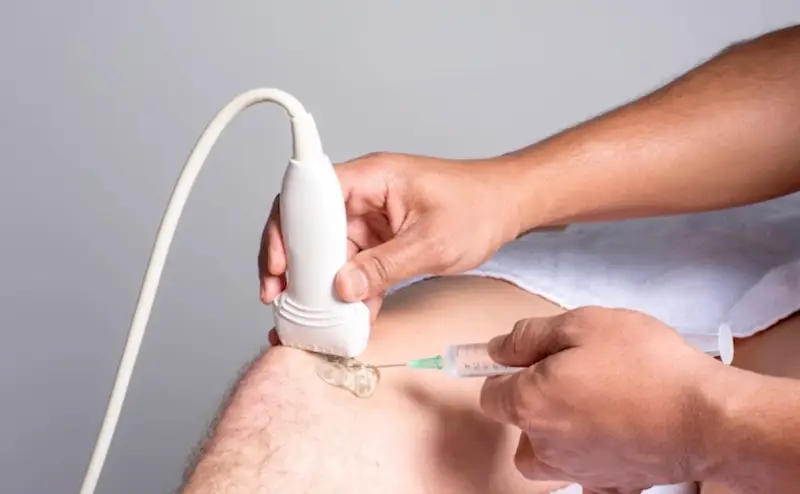The age at which knee replacement is considered is evolving with medical advances, offering even young people with severe joint problems innovative surgical alternatives. Despite the possibility of postponing an operation, preparing the patient for surgery becomes essential. Adapted exercise programs, supported by innovative technology, enable muscles to be strengthened painlessly before and after surgery, promoting rapid recovery and reducing the risk of complications. Innovation in knee rehabilitation is redefining the surgical perspective, offering a personalized approach to meet the specific needs of every patient, whatever their age. This blog was originally written by Dr. E. by Swiss Ortho Clinic.The original blog can be found here.
Using exercise therapy to delay knee replacement surgery
The age at which partial or total knee replacement is considered can vary considerably, but is usually associated with older people, often over 60. However, with medical advances, even younger individuals can benefit from these interventions in the event of serious joint problems. Despite this possibility, it is crucial to stress the importance of exercise therapy to delay the need for surgery as long as possible.

Preparing patients for knee prosthesis with targeted exercise therapy
In addition, there are several reasons why younger people generally postpone a prosthesis:
- Limited lifespan of prostheses: Replacement often becomes necessary after a certain period of time, pushing younger people to undergo several procedures over time, which is not ideal.
- Increased surgical risks: Knee replacement surgery carries risks of post-operative complications and infections.
- Premature prosthesis wear and loosening: More intensive and dynamic activities associated with a younger population can accelerate prosthesis wear.
- Irreversible nature of the procedure: The irreversible nature of the knee replacement surgery makes knee prostheses a measure of last resort. Once in place, there is no turning back.
However, in some cases, a knee prosthesis becomes the only viable option for restoring joint functionality and improving the patient’s quality of life.
When surgery becomes unavoidable, exertherapy becomes essential to optimally prepare the patient before the surgery.
This targeted approach, supported by our innovative technology using connected machines, allows patients to strengthen their muscles while respecting their biomechanics, before and after the procedure, in a pain-free manner. The benefits are many, strengthening supporting muscles, promoting post-operative stability and reducing the risk of complications. The customization of exercise programs, developed in collaboration with healthcare professionals, ensures a holistic approach, maximizing the chances of surgical success and facilitating optimal recovery.
Problems that may lead to a knee prosthesis
Several knee problems can lead to the need for a partial or total knee prosthesis. The main problems include:
- Osteoarthritis: This is the main reason why so many knee replacements are performed. Osteoarthritis of the knee is a progressive wearing away of the cartilage that covers the ends of the bones. When the cartilage is severely damaged, the bones rub directly against each other, causing pain, stiffness and loss of mobility.
- Rheumatoid arthritis: This inflammatory disease affects the joints and can lead to progressive destruction of knee cartilage. In severe cases, a total knee prosthesis may be required to restore joint function.
- Severe ligament damage: Serious injury to knee ligaments, such as cruciate ligaments, can lead to joint instability and long-term damage, possibly necessitating knee replacement surgery.
- Other forms of arthritis: In addition to osteoarthritis and rheumatoid arthritis, other forms of arthritis, such as post-traumatic arthritis or septic arthritis, may also require surgery to restore joint function.
- Severe fractures: Complex fractures or extensive damage to the knee bones may require surgical intervention with prostheses to restore stability and function.
- Bone tumors: Malignant or benign bone tumors can affect the knee, sometimes requiring a prosthesis after removal of the tumor.
- Congenital or acquired deformities: Congenital anomalies or acquired deformities may lead to deterioration of the knee joint over time, necessitating replacement surgery.
- TKP (Total Knee Replacement) is one of the most common orthopedic surgeries, with a steady increase due to an aging population.
- Over 90% of TKP patients report significant improvement in pain and joint function.
- Switzerland, with its ageing population, is also experiencing an increase in the number of total knee replacements.
- Swiss hospitals regularly perform total knee replacements to treat advanced osteoarthritis and other joint conditions
Mr. Fleury, 3 weeks after total knee prosthesis
Mr, Fleury underwent surgery for a Total Right Knee Prosthesis. Thanks to Exertherapy (exercise therapy) before the operation and immediately afterwards, he was able to regain function very quickly and pain-free.
At the Dr.E. Rehabilitation Clinic, the use of intelligent machines enables us to set up programs adapted to each individual’s strength and amplitude, while respecting their biomechanics. As a result, training is pain-free and can be adapted at any time by modifying loads and amplitudes, depending on progress. Recovery is gentle and regular.
Conclusion
In conclusion, innovation in knee rehabilitation, whether postponing surgery or fitting a total or partial prosthesis, as well as the integration of exertherapy, is undoubtedly redefining pain-free mobility for many people with complex joint problems.
Notable advances in various fields, such as surgical technique, anesthesia, implants and rehabilitation approaches, are opening up new prospects for faster, less painful recovery.
These advances offer not only a significant improvement in quality of life for those suffering from knee problems, but also a more personalized and targeted approach to meet the specific needs of each individual. In short, innovation in knee rehabilitation represents an important step towards regaining mobility, enabling patients to live more fully and actively, free from the painful constraints that may have hindered their daily lives.





